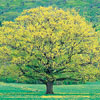|
|
Post by Alan on Sept 28, 2009 23:21:06 GMT -5
After posting my "happy birthday johnny appleseed" article here and over at the blog (http://homegrowngoodness.blogspot.com) our good friend Jason Carty and some other fine folks were kind enough to pass some information onto me regarding some apple diversity having come from Kazakhstan which is the motherland of our apples.
Apparently Michael Pollan (spelling?) had written about this diversity in his book "The Botany of Desire" which I have not yet had an opporotunity to purchase or read.
Anyhow, given the morsels of information left on my blog regarding disease resistance and wide genetic diversity of the "apple forrests" apparently dotting the land in Kazakstan I immediately started googling for images and information and found lots of information, one thing in particular that I found was a source for seed and scion wood via a friend of ours at USDA ARS GRIN Geneva New York.
Phillip Forsline who was kind enough to share many budwood apple cuttings with me this season was kind enough to also speak with me on the phone regarding this diversity and I was able to place a request and will subsequently obtain some seed from the Kazakhstan stock planted a Geneva, now these will obviously all be crosses between the Kazakhstan apples that Geneva has grown from seed as the actual seed from Kazakhstan which was collected there is being held for Universities and Professional breeders which I find respectable for sure. Anyhow, I'll be recieving this seed in November and some Scion wood of some "elite" varieties come next spring. Some of these apple varieties will be pretty useless taste wise no doubt and given the plantings proximity to Malus Domestica at Geneva I expect some crosses will not contain pure Kazakhstan wild apple genes, but that just makes the shuffling of the deck all that much more fun!
Anyhow, the exciting news in all of this is that some of these apples are proven winners with supermarket qualities already expressing themselves in the wild apple forrests of their homeland. Many have interesting disease resistance which is lacking in much of our domestic apple diversity (not really very diverse at all if you look into the history of the apple). And many also contain interesting protein compounds leading to the development of interesting flesh colors.
Pretty cool If I do say so myself!
If you get a chance this week do some google searching and read a bit about these wild apples and this diversity that needs to be saved!
|
|
|
|
Post by castanea on Sept 29, 2009 0:13:29 GMT -5
Totally cool !
|
|
|
|
Post by ottawagardener on Sept 29, 2009 7:56:31 GMT -5
I'm rivetted. Need land. Need land. Need land. My eyes will be on any of your postings on this project.
|
|
|
|
Post by pugs on Oct 19, 2009 19:21:58 GMT -5
|
|
|
|
Post by Alan on Oct 19, 2009 21:36:49 GMT -5
Thank you Pugs! That is so awesome.
Adding these bits of information to my spiritual belief system, a part of me wonders if the myth/legend/story/belief in the garden of eden were not culled from this area.
After having talked to Phillip Forsline who toured this area and from whence I am collecting the seed of these wild apples you would be suprised to learn just what fruit ancestors and wild relatives live in this veritable natural food forrest.
Dates, figs, asian perssimons, apples, pears and a tone more.......
|
|
|
|
Post by Alan on Nov 4, 2009 19:45:44 GMT -5
Last Wendsday night Michael Polan's "The Botany of Desire" aired on PBS showing a pretty good glimpse of both the USDA ARS GENEVA site including their replica Khazak apple forest as well as the real deal in Khazakistan.
What I wouldn't give for one week in those mountains during apples season!
|
|
|
|
Post by flowerpower on Nov 9, 2009 6:45:20 GMT -5
I watched the Botany of Desire last week. I was really jealous of the Geneva orchard. lol I thought the whole program was really interesting. Especially the part about the GMO potatoes.
This weekend I watched 2 episodes of Point of View on PBS. Both related to Native Americans and crops. One was on the gathering of wild rice in Minnesota and the other on commercial hemp in South Dakota. They were both good. But the hemp episode was kind of sad.
|
|
|
|
Post by mnjrutherford on Nov 16, 2009 7:38:13 GMT -5
I watch "Botany of Desire" as well. Awesome programming. Missed the POV programs though. Why was the hemp episode sad?!? I'll have to see if I can watch it online?
The Apple part of BoD made me think of BioRag! WOW! I still need olives though...
|
|
|
|
Post by Alan on Nov 20, 2009 17:11:48 GMT -5
It was a good program for sure!
The Geneva orchard is a work of art, I would love to visit it someday. Hopefully here shortly Phillip Forsline will be joining us here on our little site, I personally invited him and would love to have him here.
My favorite part of that whole thing was the "poverty lane" orchard, Kim looked at me and goes "15 years from now that is you". LOL
|
|
|
|
Post by flowerpower on Nov 21, 2009 7:09:52 GMT -5
I Missed the POV programs though. Why was the hemp episode sad?!? Jo, I thought it was sad because the DEA would wait until the crop was harvestable to destroy it. Even though they knew for months the hemp was growing on the Reservation. Here is a link to the story if you are interested. www.nativesunite.org/hemp/ |
|
|
|
Post by mnjrutherford on Nov 23, 2009 10:59:04 GMT -5
Thanks Lynn. I'll have to check the link out later. I find it rather pathetic that the American voters (I am a voter) persistently vote for arrogant, stupid (not ignorant but stupid and there is a significant difference) ARGH (I just can't think of an appropriate word so ARGH will have to suffice) into office year after year after year. I keep flashing onto the various antics that have been the lead up to the fall of so many "super" cultures throughout history. We are on that path and the issue of hemp is picture perfect of the sorts of things that occur on the road to collapse. Yep, very very sad indeed.
|
|
|
|
Post by MikeH on Aug 10, 2012 5:10:54 GMT -5
Anyhow, the exciting news in all of this is that some of these apples are proven winners with supermarket qualities already expressing themselves in the wild apple forrests of their homeland. Many have interesting disease resistance which is lacking in much of our domestic apple diversity (not really very diverse at all if you look into the history of the apple). And many also contain interesting protein compounds leading to the development of interesting flesh colors. Alan, Serendipitously, this year I acquired some scion wood of this - www.ars-grin.gov/cgi-bin/npgs/acc/display.pl?1723437. From its description - Sampled 60 fruits from 1 tree. Flesh flavor is aromatic. Over color is 70% red. Fruit size is larger than 50mm. Free of disease and insects. Best apple so far, great. , it sounds like it has possibilities. I was able to get 8 2-3 bud pieces from what GRIN provided. 5 of the 8 grafts have taken. There may be a bit of scion wood available next year which you could probably stretch a bit by chip or bud grafting. PM me if you are interested. Mike |
|
|
|
Post by raymondo on Aug 10, 2012 21:58:47 GMT -5
Sounds pretty good Mike and great to broaden the diversity a little.
|
|
|
|
Post by MikeH on Aug 11, 2012 5:15:08 GMT -5
Yep. It'll be interesting to see what the fruit is like. If it's not a spitter, one wonders what other gems are hidden in GRIN?  The Malus database contains over 12000 entries. But it's not as daunting as it sounds. The database is downloading into a .csv file. Some quick sorting gets you the 2900 Kazakhstan entries. Another sort on availability gets you down to 1485 entries. Then it becomes fun. The remarks of each entry are free form so you have to search for words. I haven't figured out how I'm going to choose wildcards to search. |
|
|
|
Post by blueadzuki on Aug 11, 2012 8:22:37 GMT -5
Yep. It'll be interesting to see what the fruit is like. If it's not a spitter, one wonders what other gems are hidden in GRIN?  The Malus database contains over 12000 entries. Back when I was in colledge I had the privilige of getting to taste a portion of the Kazak collection (a lot of it is grown out at the station at Geneva, NY, our class happened to go there at harvest season, and since they are mostly going to save budwood, thery really had no problem with us going through and eating, or even simply taking all the apples we could carry.) Of particular memory There was one apple I fell in love with so much I filled my backpack with them. It was actually a selfed version of the Szechuan apple ( Malus chinensis x chinesis). The skin was literally the lightest I've ever seen on an apple; a green so pale it was functionally white (as the fruit got overripe the color turned to more of a pale cream). Texture was a little mealy (sort of like a golden delicios) but the flavor was incredible (super sweet, with a slight nutmeg undertone). I actually did save and plant all of the seeds, but got no trees (I had a few nice seedlings going in a big pot on my patio, and them the gardeners decided to do me a favor and clear all the "weeds" out of the pots....) I've toyed with the idea of trying to get a scion, but I stink at grafting.) Other notables included a Kazak apple that was blood red right down to the core (though that was a bit too sour to be edible as a hand fruit) and then there was the icident with the Iowa Tanner's crabapple . I had gotten a bit ahed of the group and had come to a tree laden with tiny green apples that had those "chins" like red delicios get (dammit, what are they called?) looked like apples for little elves, and very tempting. I was just about to take a bite of one, when the group caught up and I heard "And this is Malus iowanensis, the Iowa Tanner's Crabapple, so called because the juice is so astringent it used to be used to cure leather." |
|







 The Malus database contains over 12000 entries. But it's not as daunting as it sounds. The database is downloading into a .csv file. Some quick sorting gets you the 2900 Kazakhstan entries. Another sort on availability gets you down to 1485 entries. Then it becomes fun. The remarks of each entry are free form so you have to search for words. I haven't figured out how I'm going to choose wildcards to search.
The Malus database contains over 12000 entries. But it's not as daunting as it sounds. The database is downloading into a .csv file. Some quick sorting gets you the 2900 Kazakhstan entries. Another sort on availability gets you down to 1485 entries. Then it becomes fun. The remarks of each entry are free form so you have to search for words. I haven't figured out how I'm going to choose wildcards to search.